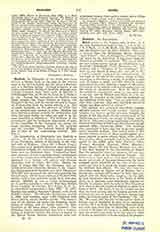

Baalbek, the Heliopolis of the Greek and Latin writers, a Syrian town at the base of the western slope of the Anti-Lebanon, and the see of a Maronite and of a Melchite bishop. Nothing is known of the origin and ancient history of Baalbek, although conjectural attempts have been made to identify it with Baalgad (Jos., xi, 17; xiii, 5), Aven (A. V. Amos, i, 5), etc. Among the monuments of Baalbek were three temples: the Great Temple of Jupiter, the Temple of the Sun, and the Circular Temple of Venus; all of them date from the second century A.D. The so-called Acropolis, on the platform of which two of the temples were erected, is older. Baalbek has been destroyed almost entirely by earthquakes and wars, but even today its ruins are said to be the most beautiful in existence. The boldness of the architecture and the cyclopean dimensions of some of the monoliths of the Acropolis are among the many features interesting both to the scientist and the traveller. The political history of Baalbek is that of the surrounding country. (See Syria.)
The introduction of Christianity into Baalbek is obscure. In the life of St. Eudocia, there is mention of one Theodotus, Bishop of Heliopolis in the reign (117-138) of Hadrian. (Acta SS., March 1, 8 sqq.) The account is of doubtful historical value and when Constantine forbade the licentious pagan practices, there were no Christians there. Constantine, however, erected a church or perhaps simply transformed one of the temples into a Christian basilica, which he entrusted to a bishop with priests and deacons (Eusebius, Life of Const., III, lviii). During the reign of Julian (361-363) the Christians were severely persecuted (Sozomen, History, V, x). Paganism disappeared from Baalbek only after Theodosius (379-395) had destroyed the idols and probably the Great Temple. Of the former bishops of Baalbek (Heliopolis) only a few scattered names have been preserved. Baalbek is now a titular archiepiscopal see in partibus infidelium, with the Most Rev. Robert Seton, formerly of Newark, New Jersey, U.S.A., as incumbent, consecrated July 5, 1903. In 1861, Baalbek was made a Maronite bishopric, with about 30,000 Catholics. The Melchite diocese was erected in 1868, and numbers some 5,000 Catholics with fifteen priests, mostly Basilian monks. The Armenians of the district are under the Armenian Archbishop of Aleppo, and the Latins under the vicar Apostolic of the same place. (See Archdiocese of Aleppo.) The Orthodox Greeks (schismatical) also have a resident bishop at Baalbek; further, the town is a station of the British Syrian Schools‘ Committee with two missionary women, three native women, and a village school, a high school, and a dispensary.”
R. BUTIN

